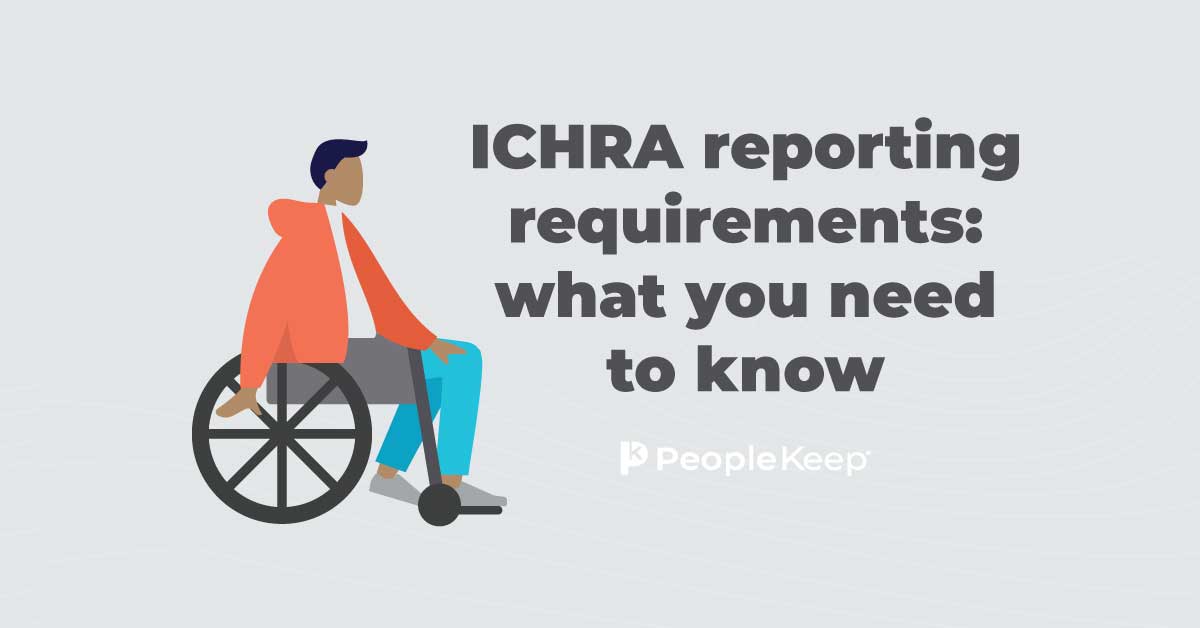What is an EEO-1 report?
By Elizabeth Walker on August 9, 2024 at 9:17 AM
As your company grows, you may have more reporting requirements from the U.S. government. Depending on the number of employees you have, one of these requirements might be filing an EEO-1 report.
Filing an EEO-1 report can be tricky, especially if it’s your first time submitting one. And because there are penalties for not filing an EEO-1 report or for providing inaccurate filings, it’s vital to know what you’re doing.
In this blog post, we’ll explain and simplify the complexities of EEO-1 reporting requirements so you can stay compliant at your organization.
Takeaways from this blog post:
- The EEO-1 Report helps the federal government monitor workplace compliance with anti-discrimination laws by collecting workforce demographic data.
- Private employers with 100 or more employees and federal contractors meeting certain criteria must complete the EEO-1 report annually.
- Failure to file an EEO-1 report can result in significant penalties. This may include fines, imprisonment, and termination of contracts for federal contractors.
What is the purpose of an EEO-1 report?
Title VII of the Civil Rights Act of 1967 and the Equal Employment Opportunity Act of 1972 prohibit employment discrimination based on race/ethnicity, religion, gender, and national origin1. To help ensure that workplaces comply with these objectives, many employers must complete an EEO-1 report, also known as Standard Form 100.
The Equal Employment Opportunity Commission (EEOC) enforces provisions of the Civil Rights Act. It takes action against violators and requires annual data collection from covered employers2. Its website also provides helpful resources for filing your report.
The EEO-1 report requires companies to report on demographic workforce data broken down by:
- Race/ethnicity
- Sex/gender
- Employee job category
Consider annual EEO-1 reports as a roadmap or snapshot of your workforce’s demographics at a specific time. Each snapshot can help you understand and take steps to address any inequities. After all, having a diverse workforce helps your business create a more positive and inclusive culture.
EEO-1 reporting also helps build a broader picture of diversity and opportunity across all U.S. employers by providing context for conversations around sex discrimination, affirmative action, and pay equity. It also helps create more businesses that are equal-opportunity employers.
Who must complete an EEO-1 report?
All private employers with 15 or more employees must comply with Title VII of the Civil Rights Act and be an equal opportunity employer. However, only some private employers have to report on EEO-1 data.
You must file an EEO-1 report if you’re a private-sector employer who has:
- 100 or more employees during the fourth quarter of the reporting year, also known as an applicable large employer (ALE)
- This excludes state and local governments, public schools, higher education institutions, American Indian or Alaska Native tribes, and tax-exempt private membership clubs other than labor organizations.
- Fewer than 100 employees, but part of a parent company that has more than 100 employees.
All federal contractors must also fill out an EEO-1 report if they meet the following requirements:
- Have 50 or more employees and are first-tier subcontractors
- Have a federal contract, subcontract, or purchase order amounting to at least $50,000, serve as a depository of government funds in any amount, or act as an issuing and paying agent for U.S. Savings Bonds and Savings Notes
Remember that only employers with organizations operating within the U.S. must fill out the EEO-1 form.
Information to include on your EEO-1 form
EEO-1 reports must include information from a demographic workforce snapshot pay period. The snapshot period is any payroll period from October through December of the current year. Only full-time and part-time employees on payroll count when determining employees for the period.
Employers should include the following information on their EEO-1 report:
- The number of reports that the company will file
- Company information, like a valid address
- Employer Identification Number (EIN)
- Total number of employees
- All employee demographic information listed by location, job, gender, ethnicity, and race categories
- EEO-1 reports require employers to classify their employees as either executive-level officials and managers, mid-level officials and managers, professionals, technicians, sales workers, administrative support workers, craft workers, operatives, laborers, or service workers
- Employers must submit a demographic breakdown of their workforce by race and ethnicity categories, which are White, Native Hawaiian or other Pacific Islander, American Indian or Native Alaskan, Asian, Hispanic or Latino, or Black or African American
- Date of payroll periods used
- The date, your title, and your signature
- Your contact information
The last but critical step is to state if you’re a single- or multi-establishment employer. The EEOC defines a single-establishment company as an organization that conducts business at only one physical address.
A multi-establishment company does business at two or more physical addresses. A single-establishment company must only submit one EEO-1 Component 1 data collection report. If you’re a multi-establishment employer, you have a few added tasks.
If you’re a multi-establishment employer, you’ll also need to submit each of these EEO-1 reports:
- Consolidated Report (Type 2): This report includes all employees.
- Headquarters Report (Type 3): This report contains information about the headquarters.
- Establishment Report (Type 4): Each establishment with 50 or more employees must submit this report.
Multi-establishment employers with fewer than 50 employees must submit one of the following:
- Establishment List (Type 6): This includes the establishment name, address, and total employee number for each physical location with fewer than 50 employees.
- Establishment Report (Type 8): Every establishment with fewer than 50 employees must submit this report.
Once you have completed filling out your required forms, you can file your EEO-1 report with the EEOC.
How to file your EEO-1 report
The EEO-1 reporting process—including relevant materials, additional instructions, and FAQs—is on the EEOC website. First-time filers can complete a simple electronic submission form to create an account and file annual reports.
Use the simple steps below to file your EEO-1 report:
- Register on the EEOC’s website
- Collect all relevant information for your EEO-1 report
- Fill out your EEO-1 form
- Submit your completed report to the EEOC by the indicated deadline
- Keep a copy of your annual EEO-1 form in your records for at least one year for informational purposes
You can submit your employee data with a paper report if you don’t want to use the online EEO-1 Component 1 data filing system. However, the EEOC prefers eligible filers to use online filing for prompt reporting. Therefore, paper forms are only available upon request and approval.
When is the EEO-1 report due?
The deadline to submit your EEO-1 report can vary from year to year. Sometimes, the EEOC grants an extension, such as the previous deadline extension during the COVID-19 pandemic. Eligible filers can also request a one-off 30-day extension.
The 2023 EEO-1 filing deadline closed on July 9, 2024. The EEOC will not accept any late reports for 2023. The next EEO-1 data collection period will start in the fall of 2024. The EEO-1 website will list updates on employee data collection, the opening date, and other requirements for organizations as they become available3.
Who should take responsibility for filing the EEO-1 report?
Your company’s HR team will likely be responsible for completing the EEO-1 report and requesting filing updates since they have most of the required information.
The annual EEO-1 reporting process isn’t only crucial for upholding an ethical organization and creating a culture of compliance—it’s mandatory. That’s why the penalties for not filing or submitting inaccurate reports are significant.
Your HR compliance team should prioritize reporting accurate and timely filings so that you and your leadership team are confident that the data submitted for your organization is correct.
“Effectively navigating the EEO-1 reporting process requires careful planning and attention to detail,” said Naomi Clarke, Head of HR at Flingster. “Companies should start by designating a team responsible for collecting and verifying the necessary data. It's also crucial to stay updated with any changes in reporting requirements by regularly consulting the EEOC's guidelines and resources. Leveraging technology, such as specialized data collection and analysis software, can streamline the process and reduce the risk of errors.”
What happens if you don’t file an EEO-1 report?
There aren’t any direct financial penalties for not filing an EEO-1 Component 1 report. However, complying with the filing requirement is in your company’s best interests.
Under federal law, the EEOC can compel an employer to file the EEO-1 report by obtaining a court order from the U.S. District Court. A judge can hold an employer in contempt if they don’t comply with the order. Federal contractor penalties vary. But, potential penalties may include termination of the federal government contract and removing them from future contracts.
Additionally, false statements on an EEO-1 report can subject eligible employers to fines, legal consequences resulting in imprisonment of up to five years, or both.
A more practical consequence of failing to file an EEO-1 report for one or more years is that an employer can’t comply with federal agency enforcement efforts and can lose credibility in an investigation.
For example, if an employee submits a discrimination or harassment complaint about your company to the EEOC, one of the first things agency representatives will do is review your company’s EEO-1 data. Depending on their findings, your company’s compliance history could impact the outcome of the investigation.
Conclusion
EEO-1 reporting is an essential annual requirement and human resource task for companies of a specific size. EEOC guidelines can be complex, but not completing the required report can put your business at risk. And because EEO-1 data tracks compliance to improve inclusion efforts, it’s best practice for companies to comply.
If you’re an ALE, many other federal regulations impact your business. One such regulation is the Affordable Care Act’s employer mandate. If you need a cost-effective health benefit to comply with this requirement or want to switch from your current group health policy, a health reimbursement arrangement (HRA) can help. Check out our ALE solutions page to learn more.
This article was originally published on March 9, 2022. It was last updated on July 28, 2023.
1. https://www.eeoc.gov/statutes/title-vii-civil-rights-act-1964
3. https://www.eeocdata.org/eeo1
EEO-1 Report FAQs
What companies must file an EEO-1 report?
Private-sector employers who have 100 or more employees (with few exceptions) must file an EEO-1 report. Private businesses with fewer than 100 employees but owned or controlled by a parent company with more than 100 workers must also file a report.
All federal contractors must also fill out an EEO-1 report if they meet specific requirements, such as having 50 or more employees, having a federal contract amounting to $50,000, and more.
How often are EEO-1 reports due?
You must file an EEO-1 report annually. The deadline to submit it varies from year to year, and 30-day extensions are available upon request.
What happens if you don’t file EEO-1?
There aren’t any direct financial penalties for not filing an EEO-1 Component 1 report. However, a judge can hold an employer in contempt if they don’t comply with an order from the Equal Employment Opportunity Commission (EEOC) to file the report.
Potential federal contractor penalties may include terminating the federal government contract and removal from future contracts.
Check out more resources
See these related articles

ICHRA reporting requirements: What you need to know
HRA reporting requirements can be complex, but this guide breaks it down for you. Learn everything you need to know about ICHRA reporting.

What is IRS Form 944?
Learn what IRS Form 944 is, who needs to file it, and how it simplifies annual federal tax reporting for small businesses with lower payroll taxes.

HRAs and W-2 annual reporting
Learn about HRA W-2 annual reporting requirements. Understand what employers need to include on employees' W-2 forms for HRA compliance.



